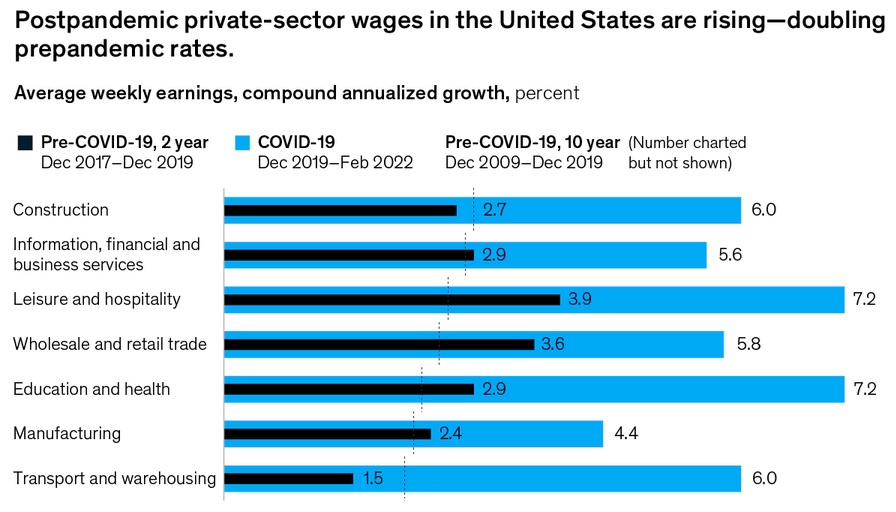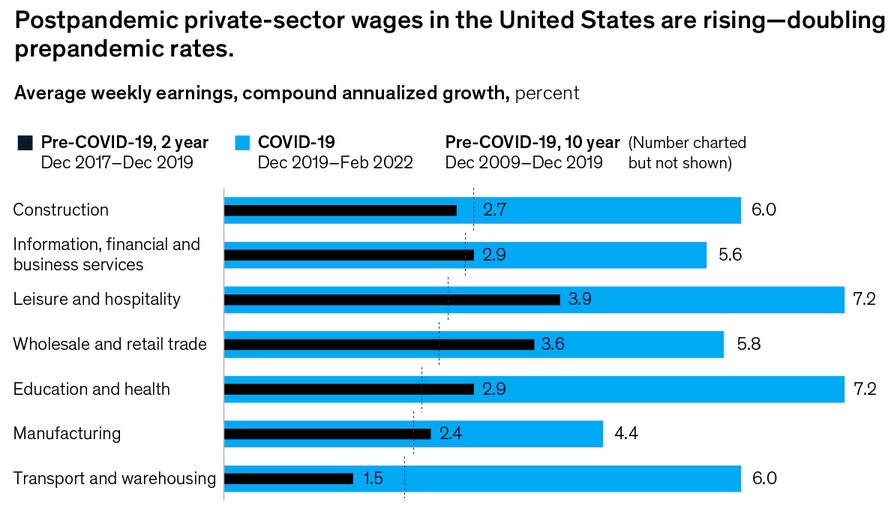McKinsey’s Latest Mind the Gap Newsletter (their cleverly named Gen Z newsletter) shows how the most upwardly mobile workers make bold job changes frequently (link here).
And can you guess what sectors are they jumping out of? Answer: the manufacturing sector. Where are they jumping to? Answer: anything but the manufacturing sector – which is currently the lowest-paying sector, according to the attached graph. The Transport and Warehousing sector used to be the lowest, but since the pandemic, Manufacturing is lowest.
An entire sector devoted to moving stuff from one place to the other is valued more highly than the actual making of the stuff.

I think many would agree that this does not reflect the contribution of US manufacturers to the US economy. According to Statista Research the US manufacturing sector contributed $2.27T out of $20.9T to US 2021 GDP; as well as contributing 50% of the total of US exports.
Manufacturing is an old, mature market and doesn’t enjoy the valuation multiples that other sectors do. If you want to invest, you’ll get more return if you go outside of the sector.
Several manufacturing companies that have been cited in Fast Company’s Most Innovative Companies list for 2022 aren’t even in the manufacturing sector: Xometry and Fathom are in wholesale trade, Aveeva, Sight Machine and Seebo are in information services.
US Manufacturers should be able to do something about this. Supporting onshoring, increased customization, and expanded distribution channels are three things that US Manufacturers can do to increase their, and their sector’s valuation.



